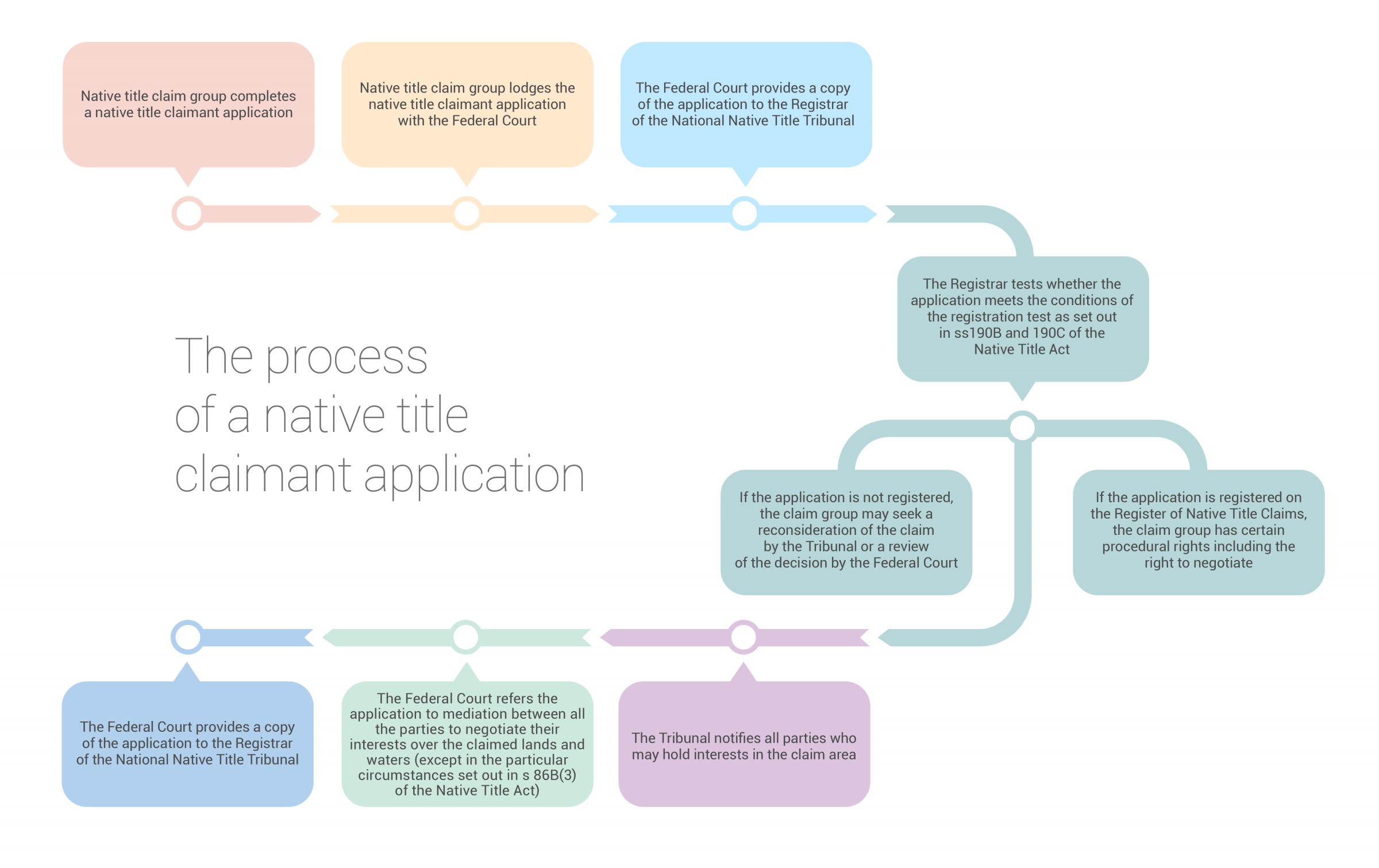The Native Title Act 1993 (Cth) (NTA) and Native Title (Prescribed Bodies Corporate) Regulations 1999 (Cth) (PBC Regulations) are key pieces of legislation that explain what PBCs must do and how they must function.
The NTA and the PBC Regulations say that when a positive native title determination is made, the native title holders must nominate a corporation - known as a Prescribed Body Corporate (PBC) - to hold or manage their native title rights and interests. The NTA also requires PBCs to be recorded on the National Native Title Register once the native title determination is made. Once this occurs the PBC becomes known as a Registered Native Title Body Corporate (RNTBC) (see About PBCs).
The PBC Regulations say that to be a PBC, a corporation must:
- be registered under the Corporations (Aboriginal and Torres Strait Islander) Act 2006 (CATSI Act) (see ORIC and CATSI Act)
- limit its membership to native title holders (or people who the native title holders have consented to)
- meet the 'Indigeneity requirements' under the CATSI Act, which essentially require the majority of directors and members to be Indigenous peoples
- list the purpose of acting as a Registered Native Title Body Corporate in the 'objects' of the corporation's Rule Book
Most importantly, the PBC Regulations also require PBCs to consult with and obtain consent from native title holders before making decisions that affect native title rights and interests. The PBC Regulations set out how PBCs must consult depending on the type of decision to be made (see Rules About Decision Making).
Native Title Act 1993 (Cth)
The NTA provides recognition under Australian law for Aboriginal and Torres Strait Islander peoples’ rights and interests in land and waters according to traditional laws and customs. The main objectives of the NTA are:
- to provide for the recognition and protection of native title
- to establish ways in which future acts affecting native title may proceed and to set standards for those dealings
- to establish a mechanism for determining claims to native title
- to provide for, or permit, the validation of past acts, and intermediate period acts, invalidated because of the existence of native title (NTA s 3)
- to provide for, and assess, compensation for the extinguishment or impairment of native title rights and interests.
The NTA establishes a mechanism for claimants to make an application to the Federal Court of Australia to have their native title recognised. Under the NTA, native title claimants are required to show that they possess rights and interests in land under traditional laws and customs. The NTA sets out the legal principles and processes for recognising native title, and the roles and responsibilities of the various bodies involved in this process.

The NTA also establishes a legal mechanism for regulating future act activities affecting native title. This allows for government and non-Indigenous parties to undertake development on native title land.
The NTA is important for PBCs because it contains a number of sections that deal specifically with how PBCs are nominated and appointed (Division 6, NTA). The NTA also includes rules about native title that are relevant to PBCs, including:
- the way future acts work
- what 'native title holder rights and interests' are
- how native title agreements are made (such as Indigenous Land Use Agreements (ILUAs)
- compensation.
Further resources
- ORIC and CATSI Act, PBC website
- Future Acts, PBC website
- About PBCs, PBC website
- ORIC and CATSI Act, PBC website
- Native title, rights and interests, PBC website
- PBC members, PBC website
- Directors, PBC website
